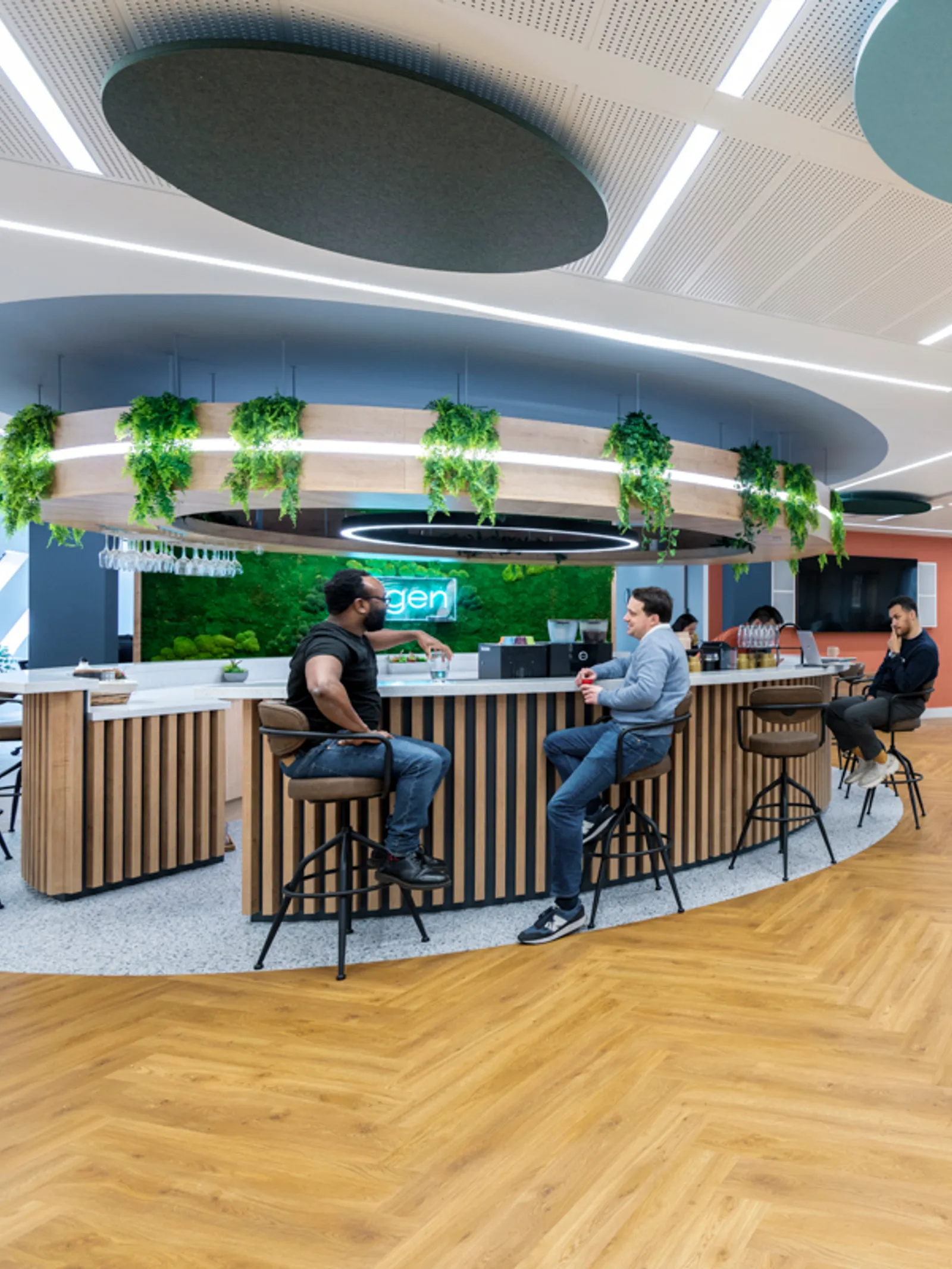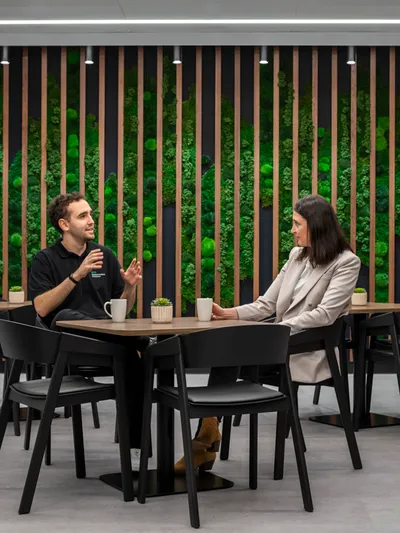Did you know that Europe has over 4,000 coworking spaces? In today’s fast-paced business world, this huge increase in flexible working is a clear sign of shifting times.
Whether you’re a budding startup or the CEO of an established company, these environments offer the flexibility, productivity, and collaboration to help your business flourish.
As more entrepreneurs ditch traditional offices in favour of coworking, we’re taking a look at the design trends shaping the future of the industry. From neurodiversity to the need for innovative tech, how are the challenges faced by today’s scaling businesses being addressed in coworking design? Let’s take a closer look.
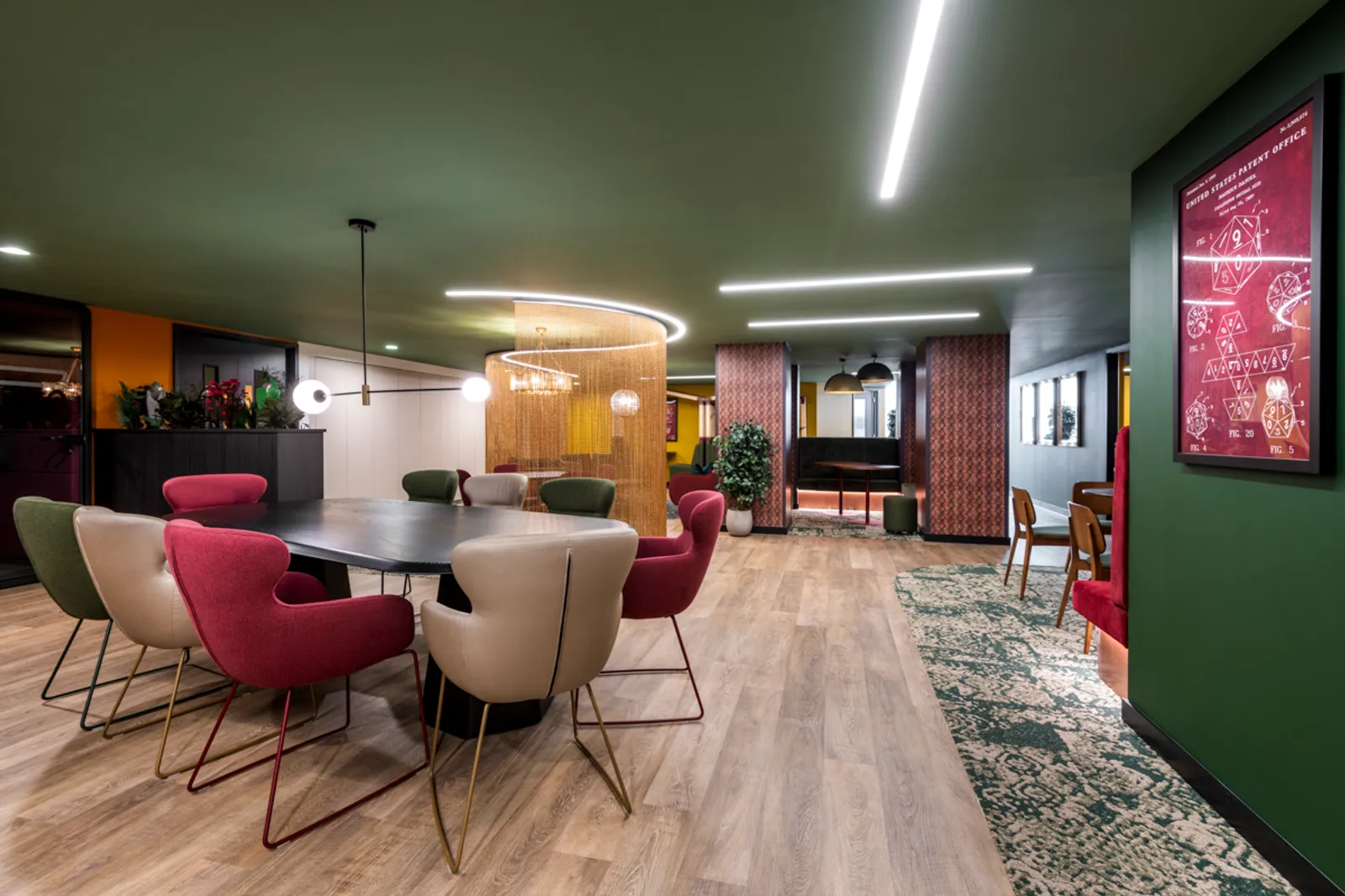
1. Inclusivity and Neurodiversity
As knowledge around accessibility and neurodiversity continues to grow, scaling businesses are under more pressure to create working environments that cater to everyone (and rightly so).
Around 15-20% of the world’s population are neurodivergent, and 16% have a disability. If you don’t build an environment that caters to everyone’s needs, you’re going to miss out on a vast section of the talent pool.
The trend of inclusivity is an exciting and forward-thinking movement, designed to bring better accessibility to the corporate world without demanding buy-in from individual businesses.
Instead, brands can simply find a co-working space with inclusive features that enable their entire team to work at their best.
Some of the trends we’re increasingly seeing in coworking space design include:
a) Quiet spaces
Collaboration in co-working environments can be a problem for neurodivergent employees who might struggle with focus or become overstimulated.
To tackle this, more flexible work environments are adding clearly defined quiet spaces to their interiors. This brings privacy and calm for those who need it, building a space that’s better suited for a variety of working methods.
b) Screen dividers
In co-working offices where quiet rooms aren’t possible (such as those where there isn’t much space), room dividers provide a temporary option for more privacy. Though they don’t reduce surrounding noise levels, they do reduce the number of visual distractions to help members focus.
c) Ergonomic lighting
If people struggle with vision problems or overstimulation, bright lights can make a space pretty impossible to work in. This is where ergonomic lighting comes in. By using smart tech to control the lights, you can tailor the softness and colour to suit your eyes.
d) Accessible technology
To create an accessible environment, co-working spaces are increasingly opting for technology with inclusive features. Equipment with voice control, for example, makes it easier for those with vision issues, tremors, and dyspraxia to make the most of the space.
By designing with inclusivity in mind, co-working spaces create a more welcoming, inclusive experience. They also aim to get the most out of everyone, tailoring environments to suit people rather than tailoring people to suit environments.

2. Health and Wellbeing
88% of UK employees now value wellbeing at work as equally important as salary, with almost 70% stating that loneliness has a negative effect on their productivity.
Coworking spaces are already addressing some well-being issues - such as loneliness - by providing a collaborative space for businesses that don’t have their own offices. This enables hybrid work, giving employees the option to work among others if they struggle to be alone.
It also enhances flexibility and employee autonomy. Rather than being forced to work from home or in an office, individuals can choose a way to work that suits their needs.
Health and Wellbeing Design
A rising awareness of health in the workplace has led to an increase in design focused around wellbeing. These can include:
Air filters that improve air quality
Plants and living walls
Standing desks
Blue-light filters (as glasses or add-on computer screens)
Soothing music
Relaxing spaces to help guests prioritise breaks
These wellness design features look to tailor environments to suit well-being needs. They can also improve focus, increase member retention, and help businesses secure top talent while scaling.
Some other common well-being trends that are gaining prominence in coworking spaces include:
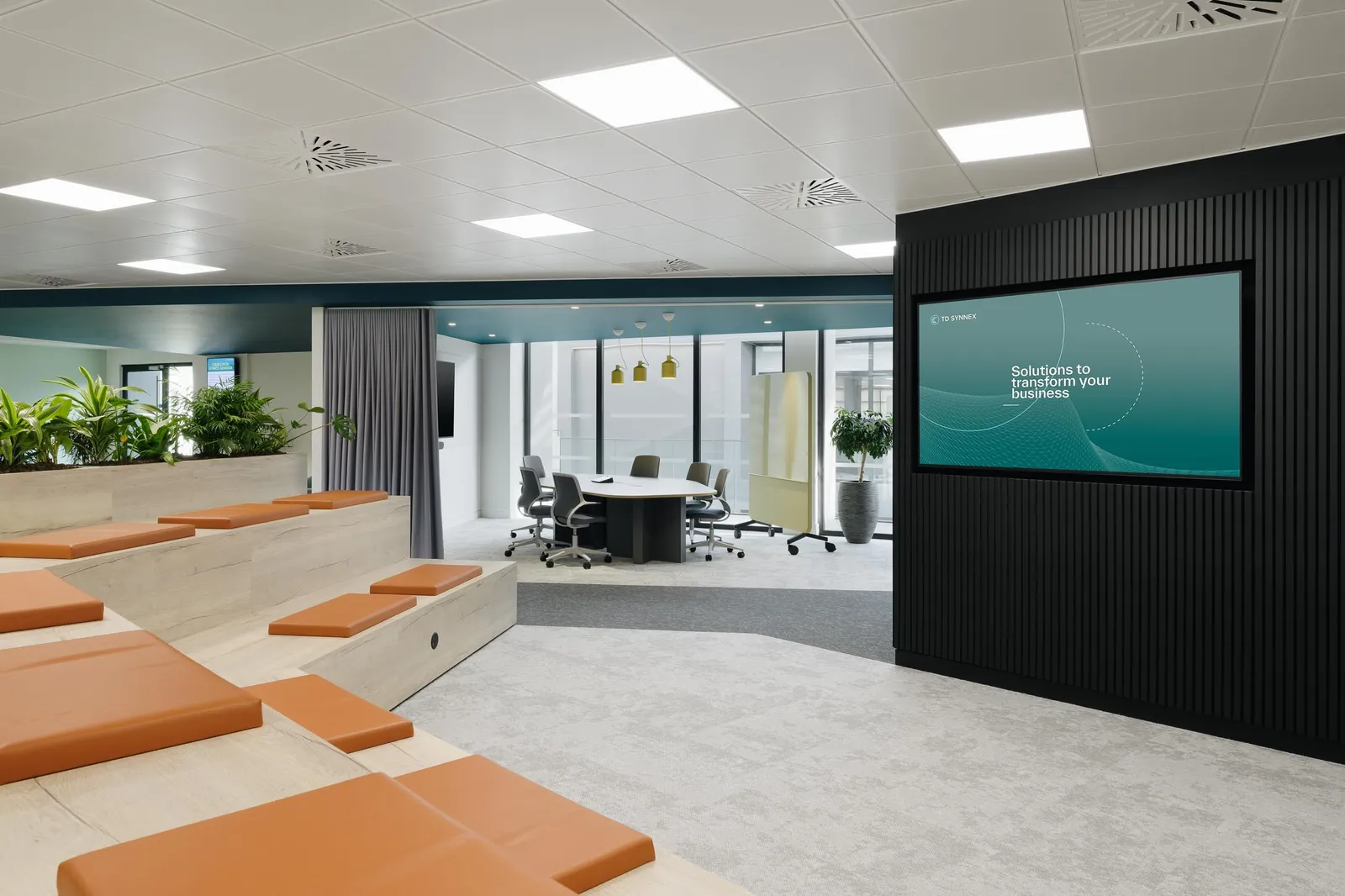
3. Tech-enabled Spaces
Technology has long been a pillar of coworking spaces.
From essential tools like a mobile card reader for cashless payments, to advanced booking software such as Skedda, tech plays a critical role in streamlining operations in coworking spaces. This helps scaling businesses function with ease and efficiency.
Now, coworking spaces are embracing a new wave of technology that’s transforming them into even more efficient, connected environments.
The Internet of Things (IoT), for example, is a fleet of tech systems that creates more streamlined, connected spaces. It can include smart lighting and thermostats that connect to a central control system, allowing guests to manage their environment more effectively.
Tech-enabled access is also becoming more prominent. Keyless entry systems that use biometrics, RFID cards, and smartphone apps, for example, provide a more convenient way to enter the building that can enhance security.
These features create environments that are better suited for scaling businesses, helping them tap into innovative technology without the need for investment.
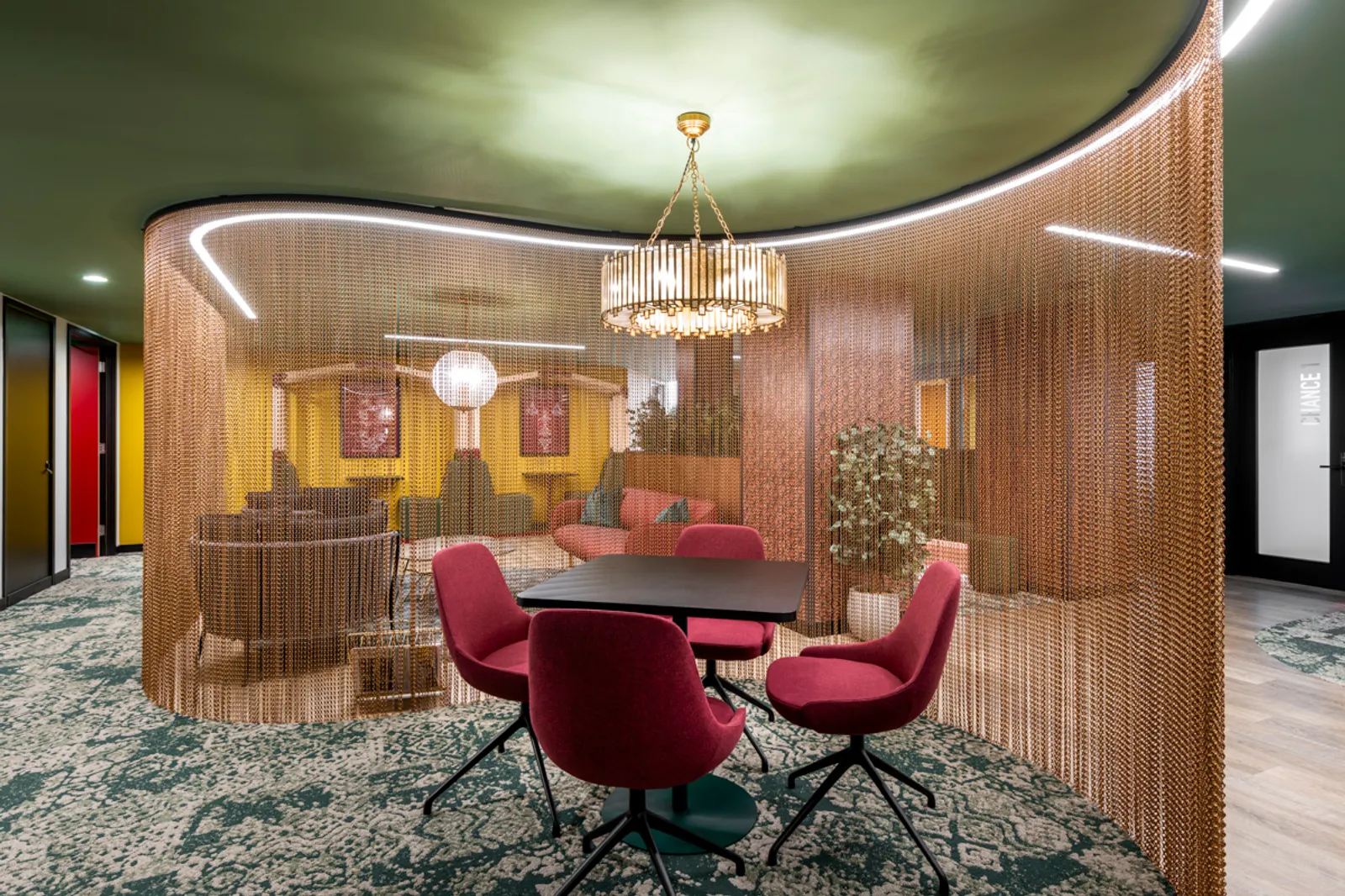
4. Varied Work Zones
Co-working spaces attract freelancers, startups, and larger, more established businesses. To compete in the growing market, the co-working environment needs to cater to each of these segments.
This is where varied work zones become crucial. By incorporating a wide variety of spaces, businesses can cater their use of the environment to suit their needs, bringing much-needed flexibility for scaling brands.
Alongside the iconic open workspaces that co-working environments are known for, we’re seeing a significant increase in:
Semi-private zones for more focused, collaborative work
Enclosed meeting rooms
Private booths for calls
Individual offices
If the space attracts a lot of creatives, individual studios are also likely to be a popular feature.

5. Biophilic Design
Biophilic design refers to increasing the use of natural elements within an interior for a space that blends the indoor and outdoor worlds.
Biophilic design can include increasing your use of natural materials or reflecting nature within art and colour palettes. Biomorphic forms that replicate natural living beings are another staple of biophilic ensign.
Natural lighting is key in biophilic coworking spaces, and commercial blinds can help regulate sunlight while preventing glare and creating a comfortable atmosphere.
This nature-powered trend brings countless benefits to the coworking environment. Among the main advantages of biophilic design are:
An increase in employee happiness
Improved productivity and focus
Reduced stress
Reduced burnout
Enhanced creativity
Better memory attention
The Orega workspace is an example of how biophilic design can be incorporated into a professional environment.
When designing their flexible office environment, we incorporated natural elements including large plants, a colour palette rooted in natural shades (including deep greens and earthy oranges), and expansive glass windows that connect the office to the outside world.
Orega is a prime example of how the biophilic design trend isn’t necessarily obvious. It doesn’t have to take over a space, but can instead be incorporated throughout in elements that blend into the existing aesthetic.
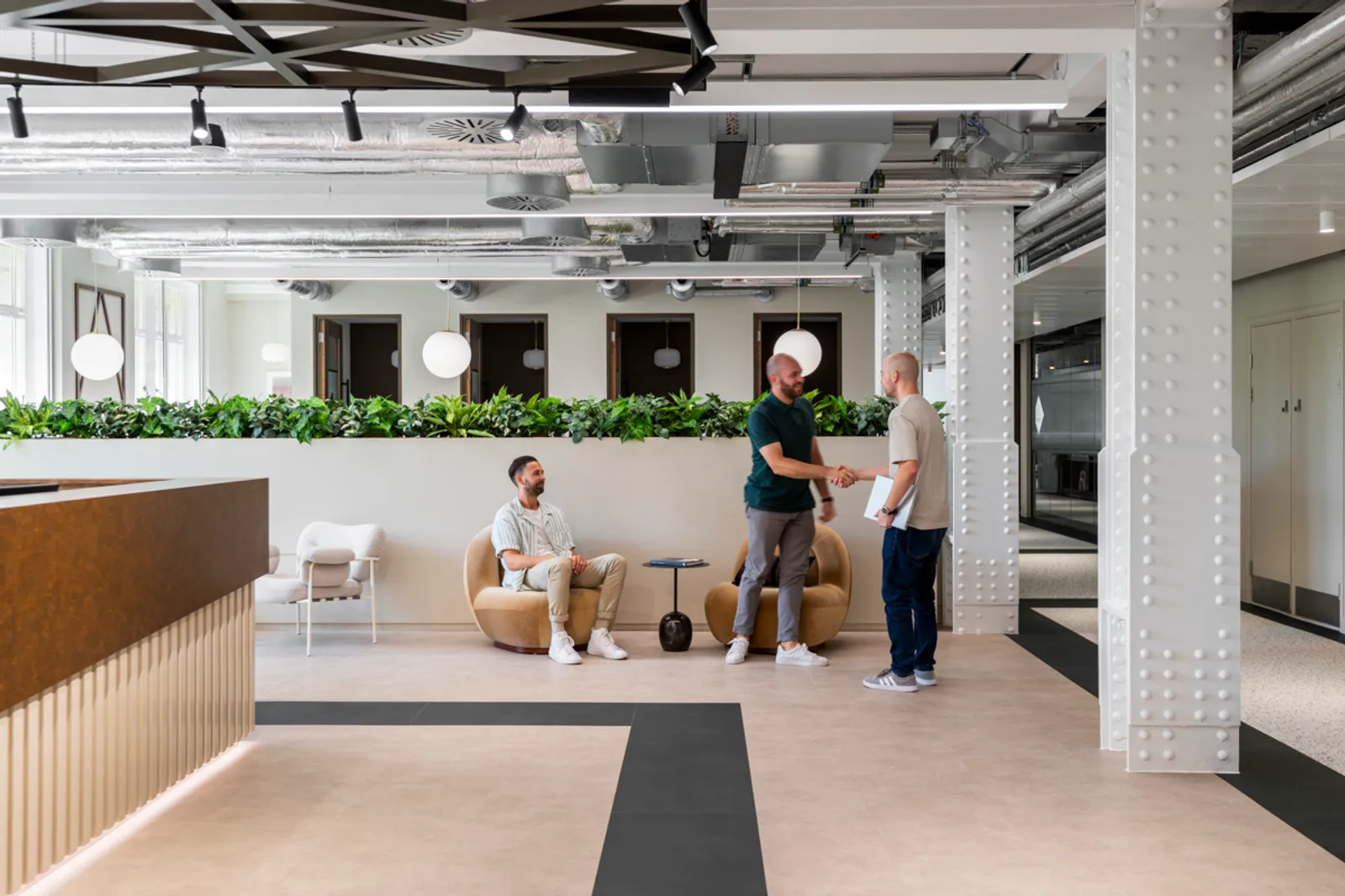
6. Sustainability
Sustainability is becoming of rising importance to consumers, and it’s no surprise that 4 out of 5 people are willing to pay more for eco-friendly features.
In coworking spaces, this makes sustainable design a clear priority. Businesses (both the coworking space owners and the businesses using the space) want their working environment to reflect their brand image, and showcasing green credentials can improve their reach, customer appeal, and business longevity.
Some of the sustainable trends we’re seeing in the coworking design industry include:
Clear areas for recycling and - crucially - food composting
Energy-saving equipment and smart controls
Non-toxic paint
Natural materials (linking back to the all-important biophilic design)
Solar panels and other renewable energy sources
These sustainable values can be translated into the visible messaging of the coworking space, too. From signage encouraging members to switch off lights when not in use to art and quotes that reflect your eco-friendly ethos, sustainability can become part of a coworking space’s identity.
Final Thoughts
For scaling businesses, the flexibility, cutting-edge technology, and inclusive design of coworking spaces are invaluable assets. The design trends we’ve explored here are just the tip of the iceberg, too! If you’re interested, we highly recommend diving deeper into the world of coworking design.
If you’re looking to upgrade your scaling business’ coworking environment, get in touch with us today!
